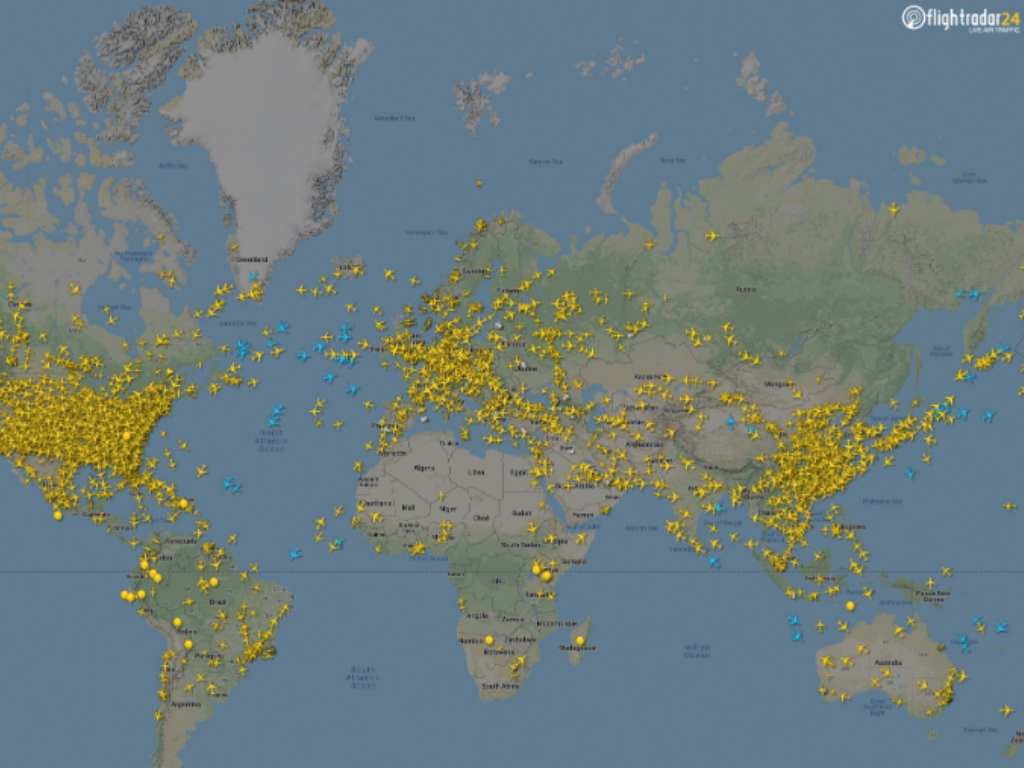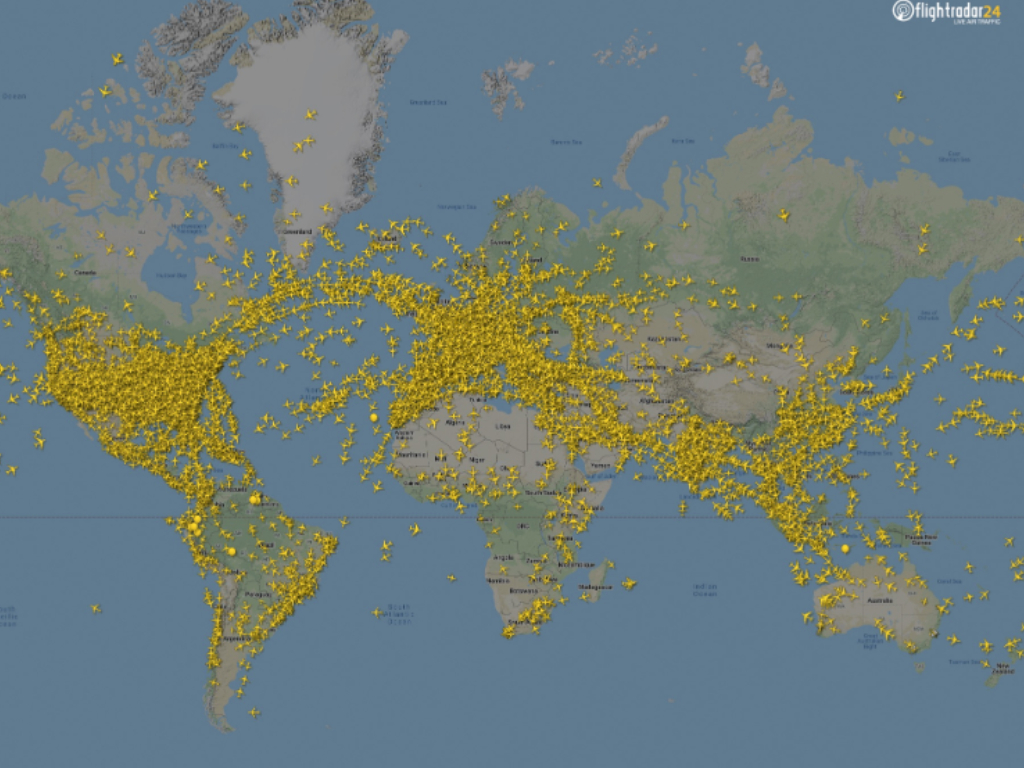Travel has significantly declined as people are urged to cancel plans and stay at home during the coronavirus outbreak.

This March, a month typically reserved for school-break getaways, saw a historic decline in air traffic.
According to Flightradar24, March 2020 saw 4,294,685 flights. That’s a 21 per cent drop from last year. Commercial flights were 27.7 per cent lower than last year at the same time, too.
Europe has seen the most dramatic decrease in air traffic when looking at the website’s before-and-after photos. The continent has seen a decrease of 2,400 flights between March and April.
This dramatic trend was first seen in China back in January, when the country saw a 75 per cent decline in air traffic during the peak of COVID-19 impact there.
By the beginning of March, Flightradar24 reports, China recovered to 40 per cent of normal in terms of flight traffic.
Total flights worldwide dropped to 55.7 per cent lower than 2019 by the last week of March.

Borders around the world have been closing in response to the pandemic.
In late March, the land border between Canada and the U.S. was closed to non-essential travel.

The border remains open for essential travel, which includes the transportation of goods and travel for work, in order not to hamper trade and supply chains between the two countries.
U.S. Secretary of State Mike Pompeo said the border restrictions will be in place for 30 days, but that may change depending on the state of the pandemic. Flights between Canada and the U.S. will still continue.
—
Questions about COVID-19? Here are some things you need to know:
Health officials caution against all international travel. Returning travellers are legally obligated to self-isolate for 14 days, beginning March 26, in case they develop symptoms and to prevent spreading the virus to others. Some provinces and territories have also implemented additional recommendations or enforcement measures to ensure those returning to the area self-isolate.
Symptoms can include fever, cough and difficulty breathing — very similar to a cold or flu. Some people can develop a more severe illness. People most at risk of this include older adults and people with severe chronic medical conditions like heart, lung or kidney disease. If you develop symptoms, contact public health authorities.
To prevent the virus from spreading, experts recommend frequent handwashing and coughing into your sleeve. They also recommend minimizing contact with others, staying home as much as possible and maintaining a distance of two metres from other people if you go out.
For full COVID-19 coverage from Global News, click here.
—







Comments